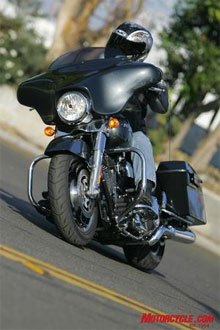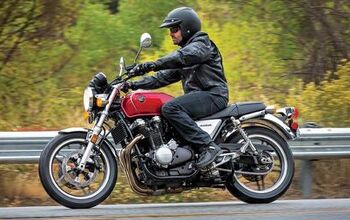Motorcycle Insurance Basics

Are you and your motorcycle insured well enough to satisfy your states legal guidelines, as well as your own risk tolerance? You owe it to yourself and those who care about you to be sure you are up to date.
It may also be a good time to shop around. Rates can vary, and different insurance companies may offer superior service, coverage, discounts, or simply a lower premium.
When you ask for price quotes from different companies, it is important to provide the same information to each so you are comparing apples-to-apples. To quote you an accurate rate, each company will typically ask the following: marital status, age, where you live, the year/make/model of your bike, your drivers license number, Social Security numbers, and the coverages and limits you want.
Insurance companies calculate your premium based on what their underwriters estimate it will cost them to assume the financial responsibility for any potential claims.
Some key definitions:
Liability Insurance
Most states require you to at least have liability coverage.
Although variable by state, liability insurance consists of some or all of the following:
Bodily Injury and Property Damage (BIPD): This covers your legal liability where a crash causes injury to another person or damage to another persons property.
Uninsured/Underinsured Motorist (UM/UIM): While considered a component of liability coverage, UM/UIM is optional in some states, and mandatory in most states. It covers you in the event another person causes an accident with you and is not insured, or his or her insurance doesnt pay enough for your expenses, including medical payments and lost wages. UM/UIM coverage is intended to make up the difference between the at-fault persons liability limits and the amount of your expenses.
Medical payments: This component of liability insurance is optional in most states. It pays for necessary medical care you receive as the result of a motorcycle accident, regardless who is at fault. In some states, this coverage only applies after other medical insurance is exhausted.
With liability insurance, there are certain minimums required, and you can elect to raise coverage, or set limits when you sign up for the policy. Limits are the maximum amount your insurance company will pay under your BIPD coverage. For example, limits of 50/100/25 mean:
Maximum to be paid per person for Bodily Injury is $50,000.
Maximum to be paid per accident for Bodily Injury is $100,000.
Maximum to be paid per accident for Property Damage is $25,000.
Full Coverage Insurance
If you own your motorcycle outright, the following coverages are usually optional. If you financed it, you may be required to carry coverage over and above liability insurance.
Coverages vary by insurer, but usually include:
Comprehensive and Collision: Typically pays for repair or replacement of your motorcycle if it is damaged, regardless of who is at fault. Comprehensive covers your bike if it is stolen or damaged by fire, vandalism or the like. Collision typically pays for damage to your bike if you have an accident with another vehicle or object.
Custom Parts and Accessories: When you purchase physical damage coverage, most insurance companies also provide coverage of at least $1,000 for custom parts and accessories. If this of interest to you, check with companies to determine what they offer.
Roadside Assistance: Typically pays for towing to the nearest qualified repair facility and necessary labor at the place of the disablement when your motorcycle is disabled within 100 feet of the roadway due to mechanical breakdown, discharged battery, flat tire, insufficient gasoline, oil, water or other fluids, or (if applicable) getting stuck in snow, mud, water or sand.
A few tips:
Before riding, make sure your policy is up to date
Are all your coverages still in force? If you had your bikes coverages restricted by a winter layaway, if applicable, you will want to call your insurance company to verify you are OK to ride once the weather is clear.
Also make sure to inform the insurance company if you have had any changes in your status, such as additional riders or a new address where you keep the bike.
Think about increasing your liability coverage limits
It may be smart to carry a higher limit if you have significant net worth. If you are involved in an accident with anyone or you damage property, you may be subject to liability. In todays litigious environment, you will want to be covered.
Consider adding coverage for medical payments to your policy.
In most states, you can buy coverage limits up to $25,000 to pay medical bills for you and your passenger, if applicable.
Be sure aftermarket or custom equipment is covered
Do you have a cool paint job, additional installed accessories, chromed items, aftermarket wheels, or the like? Let your insurance company know, or you may only be entitled to replacement for a stock bike although you may have significantly more cash invested. Your agent can let you know you are covered, but do not take it for granted.
Select your deductibles
If you are covered for comprehensive and collision, you may consider raising your deductibles to reduce your rate. This is usually a judgment call on your part. If the decreased premium is worth the savings, go for it. If it only lowers your premium a little, you may want to leave the deductibles lower, especially if you suspect one day you might use your coverage.
Jeff Cobb is the editor and publisher of Motorcycle Safety News. Comments, and questions can be directed to [email protected].

Motorcycle.com presents an unrivaled combination of bike reviews and news written by industry experts
More by Motorcycle.com Staff






























Comments
Join the conversation